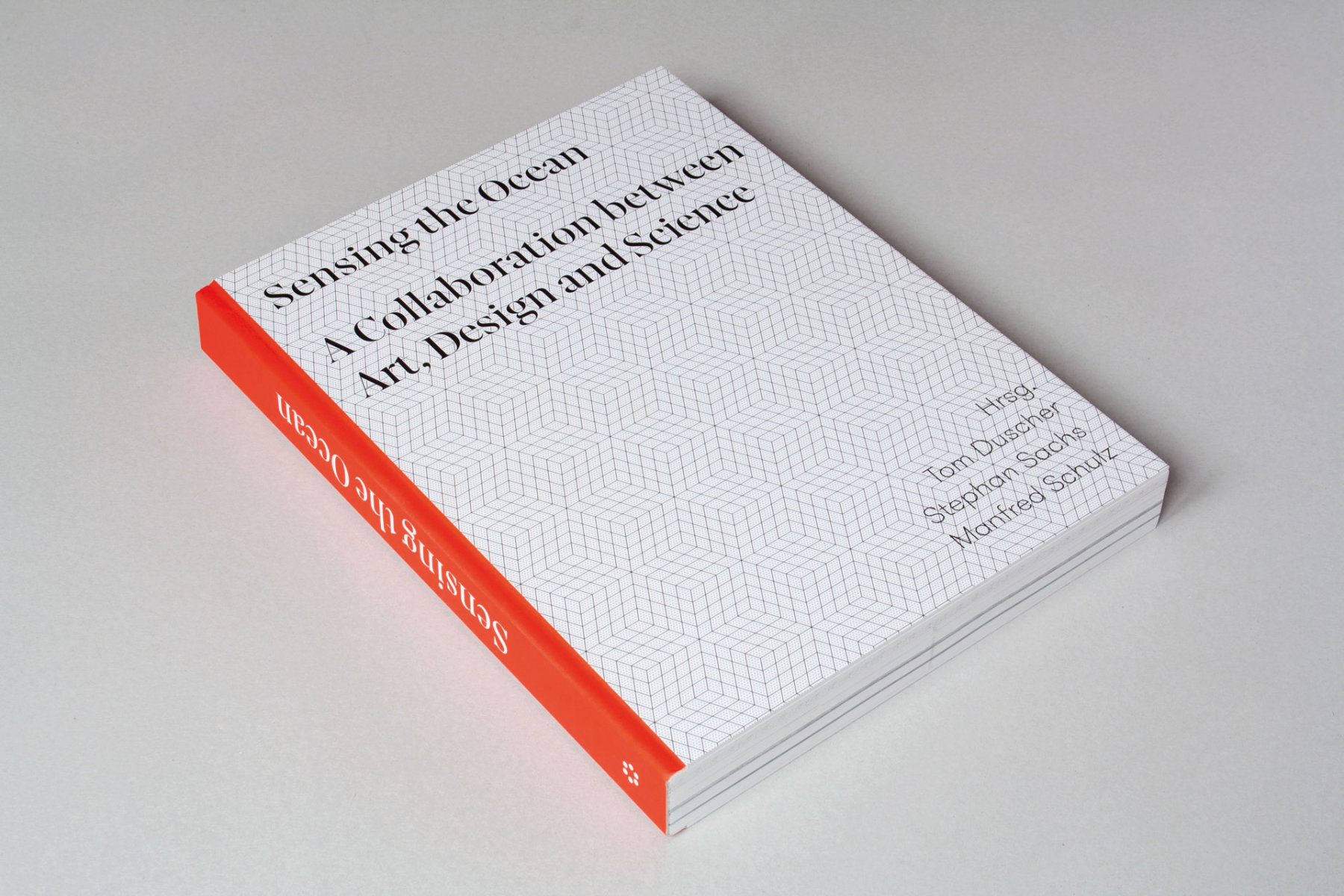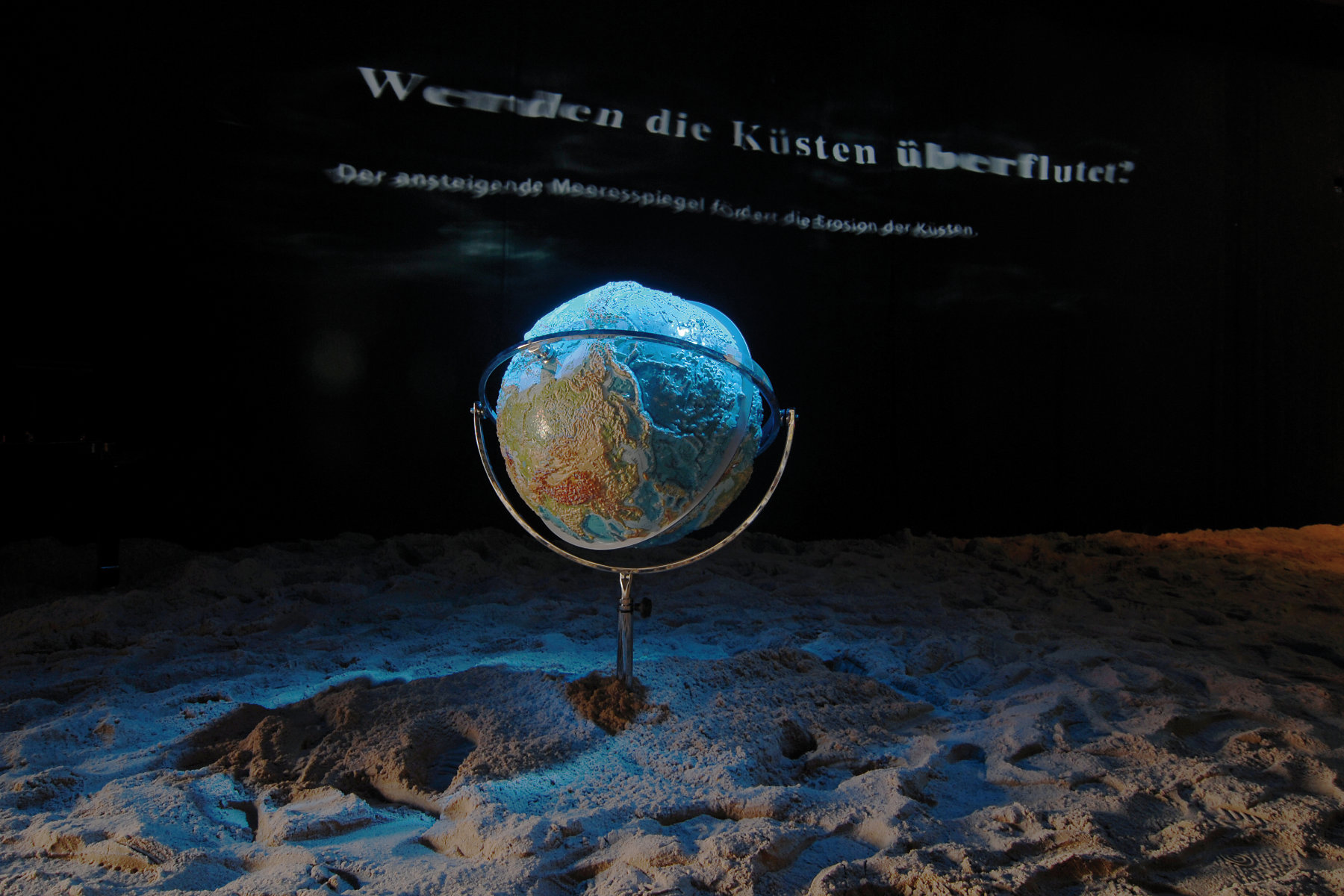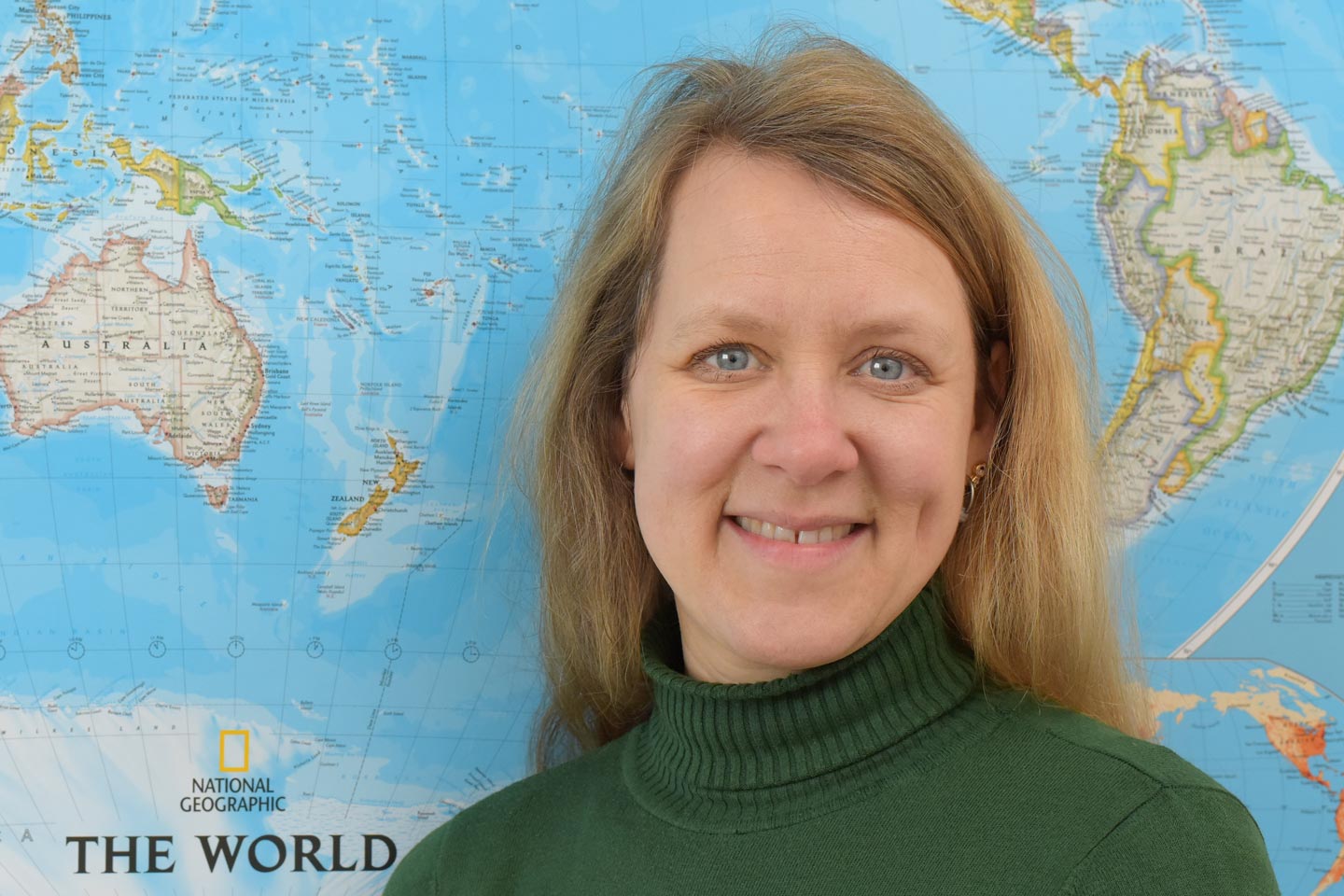The Muthesius University of Fine Arts and Design, based in Kiel, is one of the founding institutions of the Future Ocean Excellence Cluster. It is also the only arts university in Germany to be an active member of such a research project within the Excellence Initiative of the Federal Ministry of Science and Education.
Muthesius's involvement in the Cluster has evolved over time. It began as a modest relationship in which the Future Ocean Exhibition and other artistic activities were developed to communicate marine science to the public, alongside artists' perceptions of the ocean. Students supported the Cluster and its researchers by designing artistic installations and events, and by improving scientific graphics and designs for publication.
Later on, art turned into an integral part of the cluster's thinking and into a self-contained cluster topic in its own right. Martin Visbeck, speaker for the Cluster, says: "When we ask how we might communicate our findings in some subject area such as fisheries, art has become an important part of our approach."
This joint working with Muthesius has turned it from an external source of design knowledge into an important part of the academic work of the Cluster.. This collaboration, Visbeck adds, is far simpler to accomplish in a small city such as Kiel than it would be in a major center such as London, New York or Berlin. The collaboration has become a feedback mechanism to the Cluster's researchers and to the public as a whole. As research comes up with findings and explores their consequences, artistic insight helps the Cluster to understand and communicate them. These feedbacks provoke discussion which broadens everyone's understanding in many ways, improving research, science communication, and the arts in Kiel.
In the following discussion, Muthesius professors Tom Duscher (Interactive media), Stephan Sachs (experimental film) and Manfred Schulz (scenography) reflect on their experience of working collaboratively with artists, designers and scientists.
Where did your desire to engage with science come from?
SACHS Curiosity played an important role for me. I had always been interested in the natural sciences, but had no idea how things actually work in a research community, except the thought that it would probably be very different from the art world.
DUSCHER I had already found it motivating to work with different disciplines such as spatial strategies and film, and to look beyond my own discipline. And I was interested in finding a relevant and important theme such as marine research.
SACHS I would not have come on board if the content hadn't been so interesting.
SCHULZ For our group, the "Future Ocean" project made it onto the agenda easily. The theme of the sea is exciting, charming, erotic .. . I'm looking for the right words ... The theme of oceans is very complete and inspiring on many different levels, not just that of the natural sciences.
SACHS And of course it plays a special role here in Kiel, the city by the sea. When we joined the prospective cluster in 2006, I'd been in this city for just a year. I didn't really know it properly yet.
SCHULZ One could see that the scientific organization of the prospective cluster included expertise, infrastructure, traditions and a history of marine science in Kiel. In our eyes it was the right theme, in the right place, at the right time.
DUSCHER And there was great interest in us from the scientists. They invited us in with open arms, and the collaboration with an art institution was new and challenging for them, especially the first moments spent getting to know each other.

Interactive scientific posters attract exhibition visitors for their information content and their astonishing design alike. This one tells viewers about the link between underwater landslides and tsunamis.
What expectations did you have for this collaboration with the Excellence Cluster?
SACHS When we started to deal with the scientists, the Cluster did not exist. There were no models for such a collaboration. Against this background we had the idea for the first exhibition in Halle 400, a large exhibition hall in Kiel.
SCHULZ The initial phase involved just a few people. This small circle decided to try and create some publicity by doing an exhibition on the Day of German Unity. That was shortly before the decision about which excellence cluster was to be recognized, and we wanted to make an impression. Our idea was to install an "Underwater World" in Halle 400, to show that there was collaboration between diverse members who intended to be recognized as an excellence cluster.
We sought out simple, meaningful aspects of the science with broadly understandable content, and formulated possible questions. For example, the scientists gave us insights into international maritime law. From there we formulated the question "Who does the sea belong to?" From that, other scientists formulated similar simple questions such as "Will the Gulf Stream continue to flow?" or "Can algae heal people?" and then tried to answer them using appropriate text and visual material.
How did you and the scientists communicate day to day?
SACHS When the scientists first explained the content to us, we didn't understand anything. And they didn't understand that we hadn't understood anything. Knowing where the other stood was very difficult at the beginning. DUSCHER It's also about a common attitude. The interest and the passion that one finds in the scientists, which really goes deep, has an important parallel in us creative types.
SCHULZ With scientists there is a "right and wrong" logic which controls decision-making. We found repeatedly that the scientists presented interesting topics to us, we developed ideas from them, and then the scientists said: "That result is not yet final" or "We don't yet have enough measurements to be able to fully affirm that". We had to make it clear that the exhibition may also ask questions - of the sea, of people and of science.
DUSCHER Real collaboration and mutual benefit began when we realized that we work very differently with images. Scientists create technical images to assemble data. From these images, we've made emotive presentations that the scientists could relate to, so they saw where our expertise lay and how we approached the issues.
SCHULZ In the area of design, we have a clearly formulated series of tasks ranging from the identification of the problem to well-argued, conclusive solutions in an individually crafted piece of work. But other qualities can play a role even though they escape clear logic. At the beginning the scientists asked how we can be sure that of these three possible poster designs, the one in the middle is the best. They were not clear how one could get to a result with something that in their view couldn't be evaluated. Here mutual understanding developed over the years.
The whole thing resolved itself in wondrous ways in the exhibition in Halle 400, a highly immersive space. In the preliminary stages there was a lot of scepticism. Our ideas for the exhibition were expressed by means of plans and descriptions, which made them difficult to comprehend. Then when the exhibition was prepared and had opened, the majority were suddenly able to understand what we had been doing and how for the past few months.
SACHS It became clear that each of us had a unique approach to the theme. Whilst trawling through video material at GEOMAR, I discovered recordings which immediately fascinated me. They were of slow journeys across the sea floor, many taken by GEOMAR'S own manned submersible JAGO. They showed barren ground, sand, gravel, volcanic rocks, but mainly vastness and emptiness. Now and again a small fish, but mainly nothing. I positioned three big flat-screens alongside each other to form a triptych. Different sea floors came to the observer from all three screens, the locations were blended, there was no sound. It was quite a suggestive video installation. Nothing was explained - it was rather the posing of a question.
How have your experiences with scientists been different from the different perspectives of art and design?
DUSCHER It became clear that the rational approach of the scientists was more like a design attitude. For example, they needed a visualization of climate evolution over the past 10,000 years. As a designer you start by thinking about concrete problems of presentation, so there's possibly a closer relationship between design and the natural sciences. If one approaches art and asks for a concrete solution for this or that ... it's perhaps not so easy to establish.

Is the difference between the natural sciences and art that art can be open in the form of its results?
SACHS For me a certain sensuality, and the provocation of uncertainty, are important. When art enables the recipients' view of things to be just ever so slightly changed, that's a victory.
DUSCHER One can call the process of getting to a conclusion research, exploration or experimentation. For me, it's inspiring to experiment with new technologies to find out what they do or don't make possible. The new plays a central role for me, maybe because not everything that is new is also good or better. It is about shaping the future, assessing new technologies and asking what one can achieve with them. I find it fascinating to do this within the realm of ocean research, because I can question whether it helps and supports the scientists.
What does the tension between art, design and science look like, and how have artists and scientists influenced each other through the collaboration?
SCHULZ I don't believe that our work has influenced the scientists' research work.
DUSCHER I find that it has changed their attitude in some ways. For example, they have conceived and realised the latest exhibitions by themselves. We have changed the way they see themselves, how communication or presentation is thought about, and as a result maybe the way they act.
SCHULZ The scientists' research work was not influenced, but the way they interact with the public has changed. In the past few years, the communication culture within scientific research has changed, and we've made a contribution. But it has also developed its own momentum.
DUSCHER In the application for the second phase of the excellence cluster funding, Muthesius contributed to the definition of a focus for the research, and introduced the themes of culture, society and responsibility. Our position was that sustainability can be achieved if strong self-awareness and willingness to change behavior emerge in society. And that did influence the direction of the research and has made communication and visualisation themselves the object of research. The societal aspect is now taken much more seriously than before.
Was there actual collaborative work, or did the scientists, artists and designers just happen to work on the same content?
DUSCHER Think of the collaboration on the Next Generation Scientific Poster. We approached the scientists with a suggestion for a new technological form of visualisation, formulated our own creative questions, and after that asked the scientists about appropriate research content. This led to a very close collaboration in which we learned a lot about specific visualization problems in science.
Was that typical?
DUSCHER That was the fruit of the level of trust which had built up in our collaboration. Previously, the scientists had no time for the presentation of their topics, or it wasn't important enough for them. Scientific communication now has a high value in the cluster. It is seen as profitable and insightful by both sides.
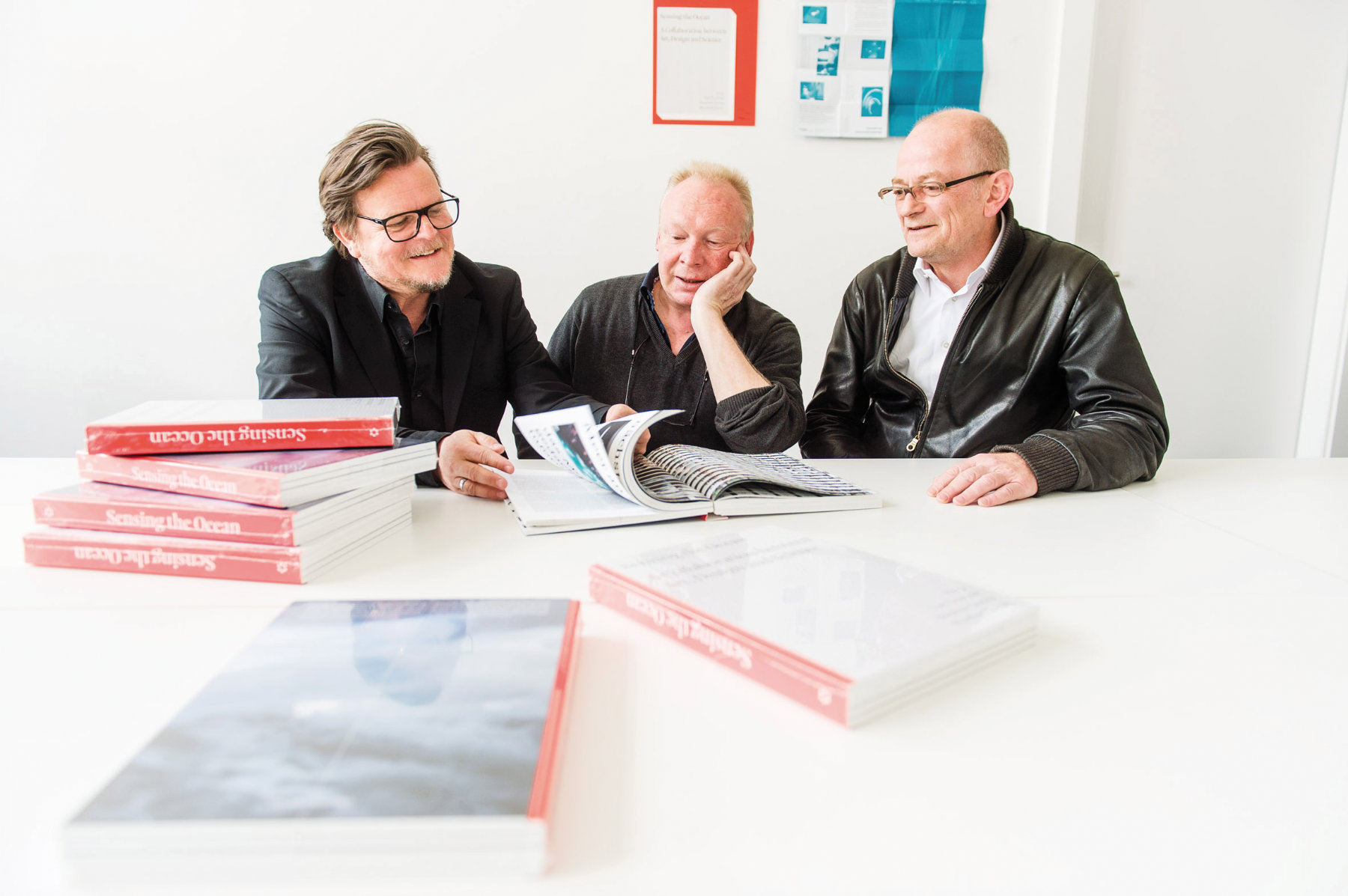
Looking to the future, which approaches could be developed further?
DUSCHER It would be beneficial if the designers, artists and scientists could literally work more closely together. This is already happening at the Center for Complex Network Research at Northeastern University in Boston. Here scientists and data visualisers work together in a team. This would go beyond working together in the initiation phase, after which everyone goes back to their own work and then takes a look at the end to see what has come out of it.
SACHS I was on a research ship and we were locked up for four weeks, with no possibility of disembarking. The scientists were well disposed towards us, but also skeptical. The situation on a ship is an intimate one, you inevitably come close and can't easily get out of each other's way. I was often asked: "What are you actually doing there?" I had to explain that I was trying to understand and was gathering a bit of initial material. What it would ultimately result in was not clear to me yet. That did lead to a certain degree of astonishment.
If scientific knowledge about the natural world is generated in the natural sciences, what kind of knowledge can art and design generate?
SACHS A current point of contact between art and design, and the natural sciences is the awareness that one must think holistically. That's the case in modern physics and medicine, or with oceanography and climate research. For me, it is very important for art to have the whole picture in view in all its complexity.
The medium of film in particular seems to me predestined to achieve this. That's one reason I love it so.
SCHULZ In medicine, one no longer looks at nerves or organs separately from each other. Rather one examines the communication between them. We creatives are good at providing ideas for new ways of seeing.
SACHS With regard to ocean research, one would be the close relationship between ocean currents. Only a fraction of them, and their impacts on our climate, have been subject to research. So far we have only understood a fraction of it. I don't think anyone really knows to what degree we can understand such highly complex systems.
DUSCHER From an artistic or creative perspective, there are actions which emerge intuitively, which follow our instincts and are hard to explain rationally. That is perhaps something which has been lost in the verifiable world of the natural sciences.
Sometimes scientists refer to scientific theories as elegant or beautiful - what do you think, can one have aesthetic or sensual experiences in science?
DUSCHER I think that in every area there is a type of good solution, a creative or intelligent solution. And that one then refers to these as beautiful, which is of course completely understandable. And we have nature as the entity to actually define beauty. Everything is measured against it.
SACHS In the natural sciences, a beautiful formula is the formula which can express a complex issue in the briefest of terms. I don't believe that aesthetics plays a role for scientists in this regard. And art is by no means just about beauty.
SCHULZ Perhaps there is a possible goal in both art and in science, which is a contemplation of the world freed from all superfluousness.
DUSCHER Simplicity.
SCHULZ Simple, clear, precise.
The interview took place on April 14, 2016 in Hamburg, and was carried out by Jolan Kieschke. It was first published in the book "Sensing the Ocean – A Collaboration between Art, Design and Science". It was abbreviated for this publication by Martin Ince.
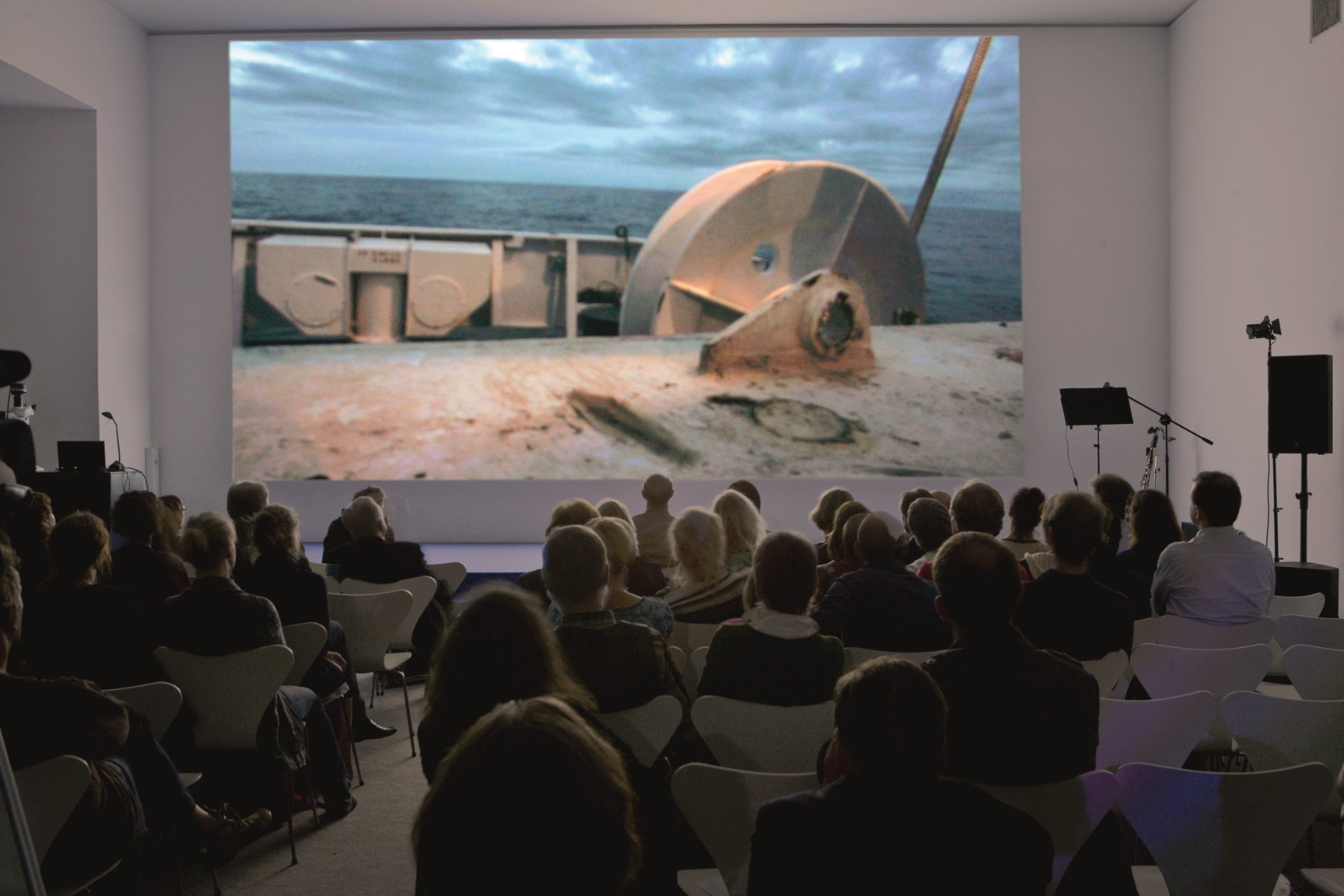
Sensing the Ocean
The book "Sensing the Ocean" uses examples from the Kiel cluster to illustrate the potential for creative collaboration between artists, designers and scientists. In its pages, the Muthesius University of Fine Arts and Design uses an extraordinary visual language to present projects that have been realised in collaboration with Future Ocean. The projects shown in the volume range from exhibitions and interactive media to immersive media and performance. The differences between scientific and artistic research are reflected in the tension of creative processes at the interface of the various disciplines, and the development of new, creative communication formats is shown.
